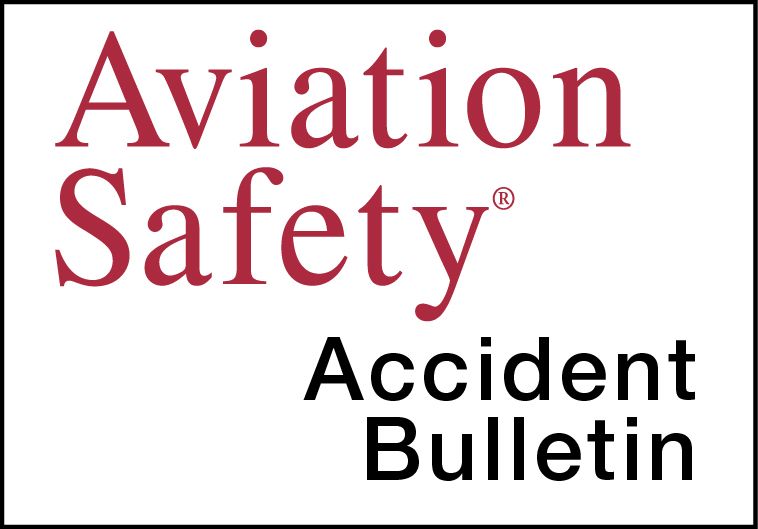AVweb’s General Aviation Accident Bulletin is taken from the pages of our sister publication,Aviation Safety magazine. All the reports listed here are preliminary and include only initial factual findings about crashes. You can learn more about the final probable cause on the NTSB’s website at www.ntsb.gov. Final reports appear about a year after the accident, although some take longer. Find out more about Aviation Safety at www.aviationsafetymagazine.com.
February 11, 2019, Richmond, Ind.
Beech 400A Beechjet
At about 1006 Eastern time, the airplane collided with ground objects and terrain following a landing overrun. The airline transport pilot and first officer plus the single passenger were uninjured. The airplane sustained substantial damage. Instrument conditions prevailed; the flight operated on an IFR flight plan.
Beginning the night before the accident flight and continuing that morning, both the captain and the F/O later said they checked weather several times before the flight but did not recall anything about runway conditions. The crew opted to fly a GPS approach to 5500-footlong Runway 24. Weather observed at the destination included -mile visibility under a 1500-foot ceiling with scattered clouds at 300 feet. Wind was from 090 degrees at four knots—a four-knot tailwind—and the temperature/dew point were the same: zero degrees C.
The crew flew a coupled approach to just above minimums when they saw the runway, which appeared to have a “very light coating of snow.” The crew touched down and applied full reverse thrust, plus spoilers and maximum braking, but the airplane failed to decelerate, rolling off the end of the runway and across a road before coming to rest. After the accident, the pilot reviewed NOTAMs again on his iPad-based EFB and saw on the first line that the airport was closed.
February 23, 2019, Winter Haven, Fla.
United Consultants UC-1 Twin Bee
At about 1243 Eastern time, the amphibious airplane impacted a residence shortly after takeoff. The flight instructor was fatally injured, the commercial pilot receiving instruction sustained minor injuries and there was one serious ground injury. The airplane was destroyed. Visual conditions prevailed.
According to the pilot receiving instruction, the instructor briefed a practice engine failure shortly after takeoff and, at about 200-300 feet AGL, reduced the throttle on the left engine. It stopped producing power, and the propeller feathered. A witness watched the airplane fly overhead as the left propeller stopped rotating. The crew identified the failed engine, then the instructor took the flight controls and selected a forced landing site. Restart procedures were unsuccessful, and they determined that the airplane would not reach the selected forced landing site. The instructor then chose a lake to the airplane’s left as an alternate site. During the left descending turn, the airplane slowed, the left wing dropped and the airplane impacted a house, seriously injuring one of its occupants.
February 23, 2019, Mansfield, Mass.
Cessna 172S Skyhawk SP
The airplane was substantially damaged at about 1225 Eastern time when it impacted terrain during a go-around. The flight instructor and student pilot were fatally injured. Visual conditions prevailed.
After performing maneuvers away from the airport, the airplane returned for landing. Witnesses and airport surveillance video show the airplane remained in a landing flare over approximately 2800 feet of the 3503-foot-long runway before the attempted go-around. The airplane entered a steep, climbing right bank before slowing and descending in a spiral to the ground.
February 28, 2019, Atlantic Ocean
Piper PA-32-260 Cherokee Six 260
The airplane was ditched in the Atlantic Ocean about 25 nm east of West Palm Beach, Fla., at 1352 Eastern time. The solo private pilot was uninjured. The airplane was not recovered and is presumed to be substantially damaged. Visual conditions prevailed for the flight from Fort Pierce, Fla., to Freeport, The Bahamas.
According to the pilot, all fuel tanks were filled before takeoff. After about 15 minutes cruising at 3500 feet MSL, the pilot initiated a climb to 7500 feet but the engine started to “sputter.” The pilot performed several remedial actions, but the engine soon lost all power. He advised ATC he was ditching, turned into the wind and extended full flaps. After landing in the water, the pilot egressed without incident onto the airplane’s wing and deployed a life raft; the airplane subsequently sank and was not recovered. The pilot activated a personal locator beacon and was rescued.
February 28, 2019, Shreveport, La.
Piper PA-46-350P Malibu Mirage
The airplane was substantially damaged at about 1039 Central when it impacted a river shortly after departure. The private pilot and passenger were fatally injured. The airplane departed on an IFR flight plan at 1037 in daytime instrument conditions.
According to preliminary ATC information, at 600 feet in the initial climb, ATC cleared the flight to continue climbing on a heading but the airplane then entered a continuously left turn through 740 degrees. While in this turn and climbing out of 1400 feet MSL, the airplane’s altitude began to oscillate between 725 feet and 1900 feet. The airplane then made a decelerating turn to the right and quickly descended, with the last recorded ATC data indicating a groundspeed of 31 knots and an altitude of 575 feet MSL. The airplane impacted a river and came to rest in about 17 feet of water.
This article originally appeared in the May 2019 issue of Aviation Safety magazine.
For more great content like this, subscribe to Aviation Safety!



































